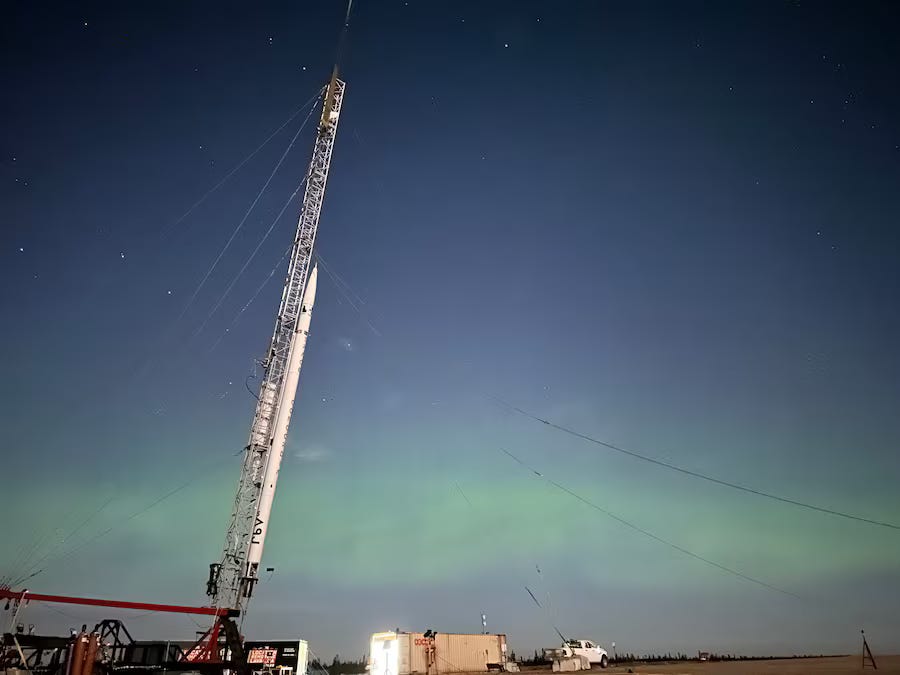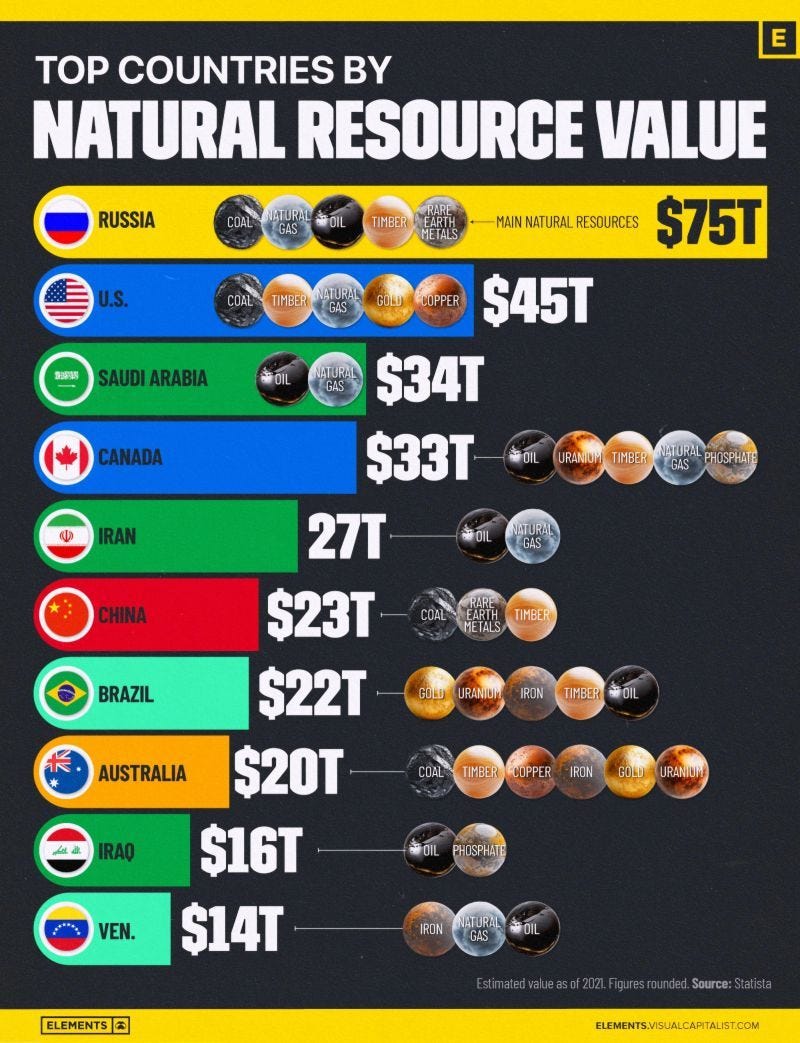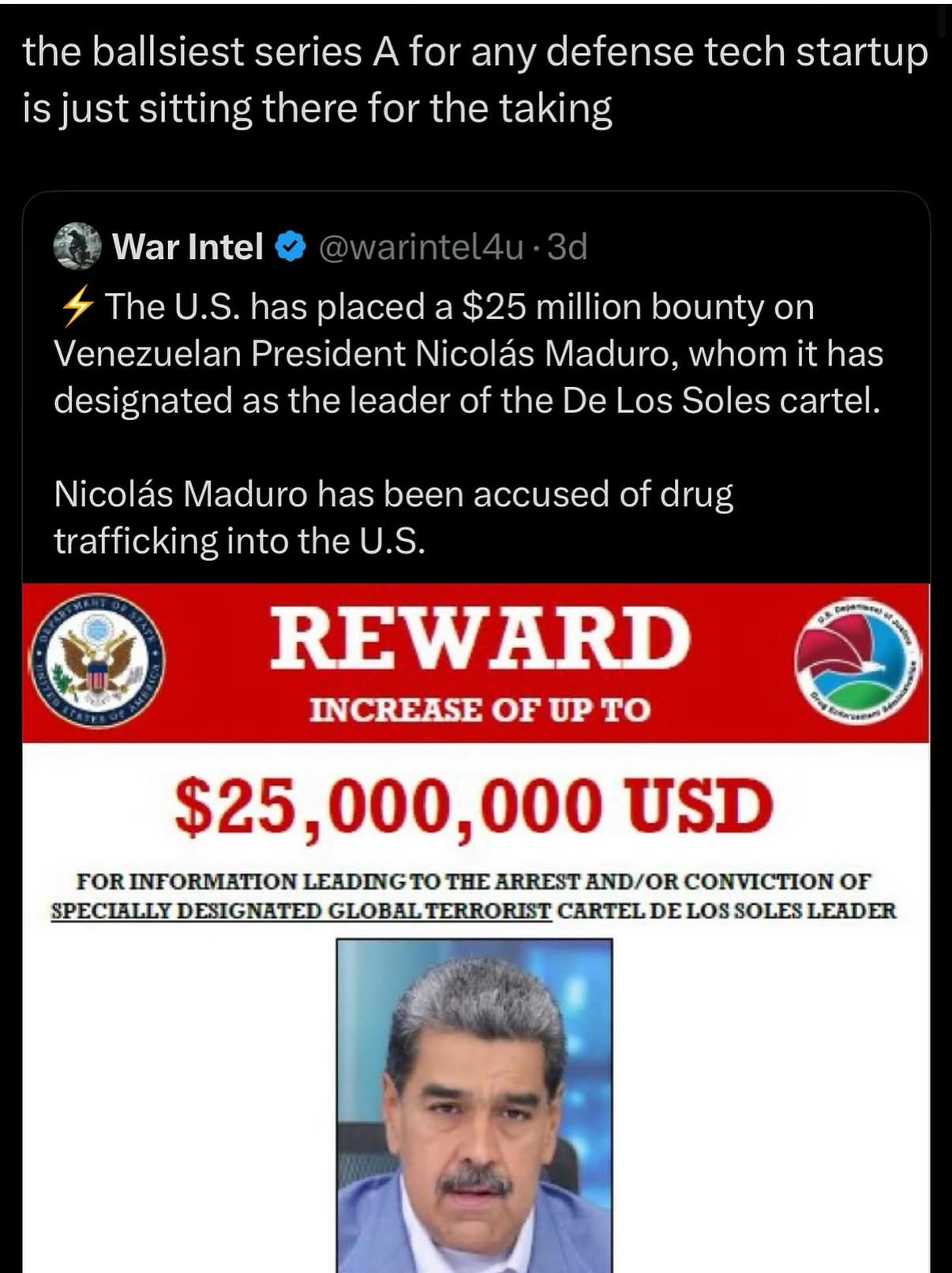Three Oceans, One Working Sub
Can Canada Buy Credible Deterrence by December?
🎯 Three-Shot Burst
Canada is playing a high-stakes game of Arctic poker. But our top naval officer says “there is a path” for the federal government to decide which company will replace Canada’s aging submarine fleet by the end of the year.
“We have three oceans to defend and one we can cover because we’ve struggled to get these submarines operational.” — Vice-Admiral Angus Topshee, commander of the Royal Canadian Navy
Canada’s four submarines are nearly 40 years old and will become obsolete in about a decade. The Victoria-class submarines are no longer being made, and it’s difficult for the military to get parts. Only one of the four submarines is operational. Two are undergoing maintenance, and another is being used for training.
Reality check: When the government launched a process to acquire 12 conventional diesel-electric powered submarines last year, five military contractors responded to the government’s request for information. American defence contractors are not in consideration, because the U.S. only manufactures nuclear submarines, which are much more costly than conventional vessels.
The companies in contention are from France, Spain, Sweden, South Korea and a joint venture from Germany and Norway. Japan recently burnished its arms exporting credentials with a US$6.5 billion agreement with Australia to build a new batch of frigates, but is not in contention on this file.
Oh Canada: Once a submarine provider is chosen, new infrastructure like dockyards will have to be built on the east and west coasts and in the Arctic. Hundreds of people will need to be trained to maintain the new submarines in a project that will require tens of billions of dollars over several decades. This is the first time Canada has gone on the open market to purchase submarines.
Bottom line: Subs are the only platform that can police Canada’s Arctic 365 days a year with stealth deterrence: lurking under ice denies adversaries the certainty that they can enter the Northwest Passage unopposed. They also collect acoustic, signals, and environmental data no surface ship or satellite can capture in winter darkness.
Regular under-ice patrols are tangible “use it or lose it” evidence that Canada exercises effective control, vital in future boundary disputes. Canadian hulls also give Ottawa skin in the continental-defence game instead of outsourcing the undersea domain to the US.
Without them, “Arctic sovereignty” is just ink on a map.
Related:
Edge of the world: How Russia’s Arctic fleet keeps this strategic corridor open, why floating nuclear plants are powering remote communities and mines, and what life looks like in a place where polar bears trail ships for fish and resupply markets pop up on the ice
Gripen Grin?: Canada meets with Saab, Ericsson in Sweden, expected to speak about the Gripen E fighter jet, a potential alternative to procurement of the American F-35. On Wednesday, Canada will mark the start of construction of an icebreaker that will be jointly built between Davies’ shipyards in Helsinki and Quebec… Canada leaving ‘no stone unturned’ to defend Arctic alongside NATO… War in Ukraine shaping Canada’s approach to Arctic sovereignty… Ontario Shipyards partners with province and Italy’s largest builder to ready bid for navy corvettes
Good Fences make…: Prime Minister Carney praises Trump as ministers jet to Sweden to talk defence deals… Canadian disapproval of Washington higher than Beijing, on par with Moscow
No choice: Canadian SecState for defence procurement Fuhr pledges to move ‘quicker,’ take more risks
Unmanned: U.S. Navy sets sights on fleet-wide family of unmanned ships… The shipbuilding company reviving a small Midwest town… Katherine Boyle from Andreessen Horowitz on America’s defence tech renaissance
📋 Procurement Update
Mapping the Canadian dual-use technology ecosystem
[Editor’s note: Thanks to the 400+ companies that took the survey. We are actively briefing federal officials on the results to inform the forthcoming defence industrial strategy.]
New approach to Canadian content?: Canadian content has typically applied (when a National Security Exemption is evoked) in two different ways: through the Industrial and Technological Benefits, and the Canadian Content Policy. Is there now a third option — the Canadian Value Added (CVA) approach?
Reading list: The book Unit X: How the Pentagon and Silicon Valley are transforming the future of war, points to critical questions about how Canada can seize the moment to integrate both defence primes and disruptive startups into a new procurement model
Fix it: Office of the Procurement Ombud: Top 5 foundational changes needed in federal procurement… is Canada one supply chain disruption away from being defenceless?
Clean slate: The Canadian Coast Guard (CCG) is in a position most organizations could only dream of; they’re starting fresh. With a clean slate, the Coast Guard can aim higher, move faster, and avoid decades of the legacy challenges other fleets still struggle with
Front line: ONE9 founder Glenn Cowan explains how Canada can rebuild defence innovation—dual-use tech, procurement reform, and the next bets… Successful Canadian defence procurement will require bold decision-makers
Cool jobs alert: Our friends at Export Development Canada are ready to get into defence tech, and have asked that we share this job posting for their first National Lead - Defence & Security Ecosystem… CADSI is seeking to hire a full-time, permanent Executive Director to lead the strategy and execution of WiDS programming
Test it: How might we detect and/or defeat Micro and Mini Uncrewed Aerial Systems (UAS) with systems that can be integrated into the broader military command and control system? IDEaS CUAS Sandbox 2026 now taking applications
Sell it: Join our pals at Communitech to learn how local tech companies can tap into Canada’s defence and security sector. Hear from FedDev Ontario and industry experts on accessing procurement opportunities, building partnerships, and leveraging government resources to scale
💾 Canada’s first Defence Tech Hackathon
September 20 in Toronto at the DMZ
The Defence Tech Hackathon is a catalyst to jumpstart a world-class ecosystem that builds sovereign capability in Canada. Our goal is to attract top talent, rapidly prototype real-world solutions, and bridge the gap between innovators and military end-users.
By forging new startups, building critical networks, and injecting a sense of urgency into defence innovation, this hackathon lays the foundation for Canada to compete and win on the global stage. We aim to advance the grassroots spirit of current and soon-to-be defence tech entrepreneurs.
We are still finalizing details, but here is what we know so far:
We will aim to rapidly prototype dual-use tech that solves real operational gaps for the Canadian Armed Forces
We are considering a challenge for a prototype platform that ingests multi-modal sensor feeds (satellite, UAV, radar, acoustic, etc.) and fuses them for real-time Arctic domain awareness
If you’re a software engineer who is defence-curious, this could be for you. We are looking for folks with domain expertise/experience in one or more of: defence, dual use tech (software and technology that can be used for both civilian and military applications), or Arctic operations; or who have any prior experience with multi-modal sensor fusion and real-time data platforms
UPDATE: As of August 17, the sign up form is closed. We are finalizing logistics and will be in touch with participants.
🤝 Sovereign Capability
Canadian space race heating up
For the first time this century, a rocket built and launched in Canada has reached for outer space – an attempt made not by a private company or government agency, but by a group of engineering students at Concordia University in Montreal who spent seven years turning their homegrown dreams of space flight into reality.
The rocket, dubbed Starsailor, lifted off on Friday from an isolated launch site in the Mistissini region of Northern Quebec.
Starsailor marks the first attempted space launch in Canada since 1998 and the first ever in Quebec. It is also the first student-led space launch to receive approval from Transport Canada.
Worldwide, only a handful of student rockets have ever succeeded in reaching space. Starsailor was aiming to become the first to do so using a liquid fuel engine, the same method by which commercial launch companies such as SpaceX regularly loft satellites into orbit.
While the project’s ultimate goal was not achieved during its maiden attempt, the fact that a student club managed to get so far in a country that long ago surrendered its capacity to independently access space is a paradigm shift.
Collectively, more than 700 Concordia students have been involved in the project, which began in 2018 when some members of Space Concordia decided to enter a U.S.-based contest that offered a purse of US$1 million to the first student team who could launch a rocket into space using liquid fuel.
Related:
NordSpace breaks ground on new Atlantic Spaceport Complex in Newfoundland. The company’s first launch window opens on August 25, when it will test its Taiga suborbital rocket powered by its proprietary 3D-printed Hadfield Mk III liquid rocket engine
How Canada can be a leader in space (and save the world)
MDA CEO says more corporate headquarters in Canada could fix our productivity crisis
Canada's new lunar utility rover will help astronauts build a future on the Moon
Canada's new space race is about one main thing: satellites
Reaction Dynamics (building the rocket) and Maritime Launch Services (building the spaceport) have signed a Pathfinder Launch Agreement and investment — paving the way for orbital launches of Canadian-designed and built rockets from Canadian soil
Americans may launch Canadian weapons under Golden Dome… US military to test quantum navigation on secret spaceplane
Canada ought to be dominating nuclear reactor exports. Instead, Russia is, forged from the scattered remains of Soviet nuclear industry—state-owned factories, design bureaus, and operating companies:
Big moves in the critical minerals space over the past few weeks:
1️⃣ US-China diplomatic shifts
2️⃣ Pentagon purchase of a key US company MP Materials
3️⃣ Series A funding announcement from a new US manufacturer of rare-earth magnets
China distorts global markets for critical minerals through subsidies, export controls, and price manipulation, threatening U.S. and allied industry. Drawing lessons from stockpiles in history, The Hoover Institution proposes establishing a U.S.-led multilateral critical minerals stockpile (MCS), implemented by regulated private operators
The US badly needs critical minerals, and Canada has them
How did America lose so much productive capacity to China?: “In cutting off rare-earth magnets, officials in Beijing flexed but one finger. If they wanted, they could have strangled vital sectors of the American economy.”
⚔️ Combat Readiness
The Agile Arsenal
In an era where drone technology is rapidly reshaping defence, IQT's Clayton Williams presents a crucial conversation with Auterion, a company at the forefront of autonomous systems.
🍁 Canada’s Inaugural Defence Power 50 List
We have now closed nominations for Canada’s inaugural Defence Power 50 List. The list will recognize the most influential leaders and up-and-comers in the defence community who are critical to making the changes Canada needs.
The selection of this inaugural 2025 list is co-chaired by Erin O'Toole, Glenn Cowan, Philippe Lagassé, Sheldon McCormick, and Eliot Pence.
Thank you to everyone who submitted a nomination!
🔫 Hot Shots
Ten-year horizon: From a boom in underwater and ground vehicles to a fully-robotised battlefield, here’s how industry insiders think warfare will change in the next decade… Six unmanned water vehicle startups to watch… For now, investors are betting on Ukraine's combat-tested tech… Most C-UAS tech fails against real drone tactics… Veteran Ventures Capital raises $60M fund to back defence and civilian tech startups… The Palantir mafia behind Silicon Valley’s hottest startups
Euro trip: German military targets 8,300 drone systems, lagging NATO allies… How might the Canada/EU defence partnership actually work?… Defence tech raised more funding in Europe last quarter than all of fintech combined — take a look at the companies shaping the sector… Europe’s weapons industry is expanding at three times the average rate during peacetime… and don’t forget, The Icebreaker has formally partnered with the European Defense Tech Hub to help you get there — check out their latest hackathon on wireless biomedical sensors
Pinky swear: Secrecy for life to be binding for thousands at DND and in Canadian Forces under new initiative
New dawn: Automated warfare via AI is key to victory in Ukraine… Anduril hosting a NASCAR race on an active military base
Tactical evolution: The danger of drones is omnipresent. At the same time, tanks and artillery remain important. UK armed forces chief says ‘traditional’ capabilities still matter, and those on the front lines in Ukraine agree:
…Armies tormented by drones innovate ways to spot, jam and zap on the cheap, including computerized rifle sights and backpack-portable jammers… Ukrainian sniper, using AI, successfully fired a shot at a record distance of 4,000 meters. The unique hit without direct visibility was performed under the adjustment of the UAV complex from a Ukrainian-made Alligator rifle of 14.5 mm caliber, equipped with a thermal imager.
Elsewhere, not everyone thinks Ukraine is a good model for winning the innovation war.
Operation Flamingo: Improvements to Russia's ballistic missiles are proving to be a major challenge for the Patriot air defence system… but Ukraine’s long-range Flamingo cruise missiles have entered serial production
War all the time: This cybersecurity company’s AI hacker can locate files on Nimitz-class aircraft carriers ‘in less than five minutes’. The defence industry has increasingly served as a template for identifying threats and protecting assets in the private sector
Weaponized capital: The use of opaque or adversarial investments by hostile states to gain influence over critical sectors like biotech poses a growing strategic risk
Road to Charter: Momentum behind the Defence, Security & Resilience Bank (DSRB) is building fast
Our House: House of Commons hit by cyberattack from 'threat actor'… You can’t fly sovereignty on foreign fuel… Deterrence must be the priority of Canada’s expanded Armed Forces spending… or should it be climate tech?… Operationalizing NATO's Climate Security Plan in the Arctic Maritime Domain… Federal Liberals looking to provide 'certainty' to defence investors in fall budget
Public opinion: How NATO nations need to sell the 5 percent spending hike to their own people… Appetite for Canada to increase defence spending on the rise… Canadians overwhelmingly in favour of mandatory national service, however, when it comes to compulsory military service like they have in South Korea or Finland, opinions shift dramatically, with 44 per cent opposed and 43 per cent in favour
Top of the table: In this new world order, resource-rich nations with low-cost energy win big
Reading list: Friend of the Icebreaker Vincent Marmion is launching a newsletter on all things Canada and Europe:
⚔️ Meme Warfare
🤝 York University x The Icebreaker
The Icebreaker is partnering with York University to tackle the business of dual-use tech
On October 1, York University’s annual Mercier Lecture in Entrepreneurial Science — a joint initiative of the Schulich School of Business and Lassonde School of Engineering — will be co-hosted by The Icebreaker. The evening will feature a keynote by NordSpace CEO Rahul Goel, followed by a panel discussion (panelists to be announced) on dual-use tech. Apply to attend if you are interested — spaces are limited.
Thank you to the ~30 folks who attended The Icebreaker’s Victoria, BC patio drop-in last week!
If you’ve got battlefield intel, classified tips, or just want to call in an airstrike on our typos, hit “reply” and sound off. Whether it’s a new tech sighting, a rumour from the mess hall, or feedback on our comms, we want your SITREP.










